The 1952 aerial photo below shows Fort Worth’s Greenway Park east of downtown.
 But what was that cross-shaped building on East 1st Street south of the park? It was Prince Hall Masonic Mosque and McDonald College of Industrial Arts. The college was named for African-American civic leader William Madison (“Gooseneck Bill”) McDonald.
But what was that cross-shaped building on East 1st Street south of the park? It was Prince Hall Masonic Mosque and McDonald College of Industrial Arts. The college was named for African-American civic leader William Madison (“Gooseneck Bill”) McDonald.
 This Gazette clip shows that Fort Worth has had an African-American Masonic lodge since at least 1889. Prince Hall (1735-1807) had founded the African-American branch of Masonry in Boston in 1784.
This Gazette clip shows that Fort Worth has had an African-American Masonic lodge since at least 1889. Prince Hall (1735-1807) had founded the African-American branch of Masonry in Boston in 1784.
 By 1907 Fort Worth had four African-American local lodges with a total membership of two hundred. That year on March 18 Fort Worth’s Prince Hall lodge members laid the cornerstone for a new lodge hall at 9th and Jones in Fort Worth’s “African-American downtown,” where the Intermodal Transportation Center is today. The new hall also was the statewide fraternal organization’s grand lodge hall and hosted state conventions. Clip is from the March 18 Telegram.
By 1907 Fort Worth had four African-American local lodges with a total membership of two hundred. That year on March 18 Fort Worth’s Prince Hall lodge members laid the cornerstone for a new lodge hall at 9th and Jones in Fort Worth’s “African-American downtown,” where the Intermodal Transportation Center is today. The new hall also was the statewide fraternal organization’s grand lodge hall and hosted state conventions. Clip is from the March 18 Telegram.
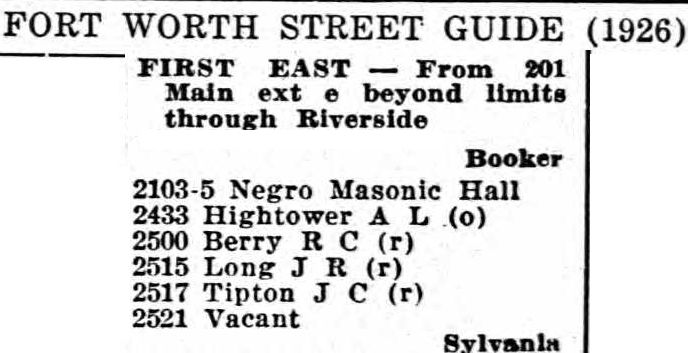 In 1924 members of the local lodge built a new mosque on East 1st Street. Architect was H. L. Spicer. The building was shaped like a cross and faced with red brick. In its halls hung life-sized oil portraits of African-American Masonic leaders. The building was said to be the “largest building of its kind in the United States . . . belonging to Negroes.” It could accommodate three thousand delegates at state conventions. Count Basie and Cab Calloway and Duke Ellington performed there. The building was a center of local African-American social life.
In 1924 members of the local lodge built a new mosque on East 1st Street. Architect was H. L. Spicer. The building was shaped like a cross and faced with red brick. In its halls hung life-sized oil portraits of African-American Masonic leaders. The building was said to be the “largest building of its kind in the United States . . . belonging to Negroes.” It could accommodate three thousand delegates at state conventions. Count Basie and Cab Calloway and Duke Ellington performed there. The building was a center of local African-American social life.
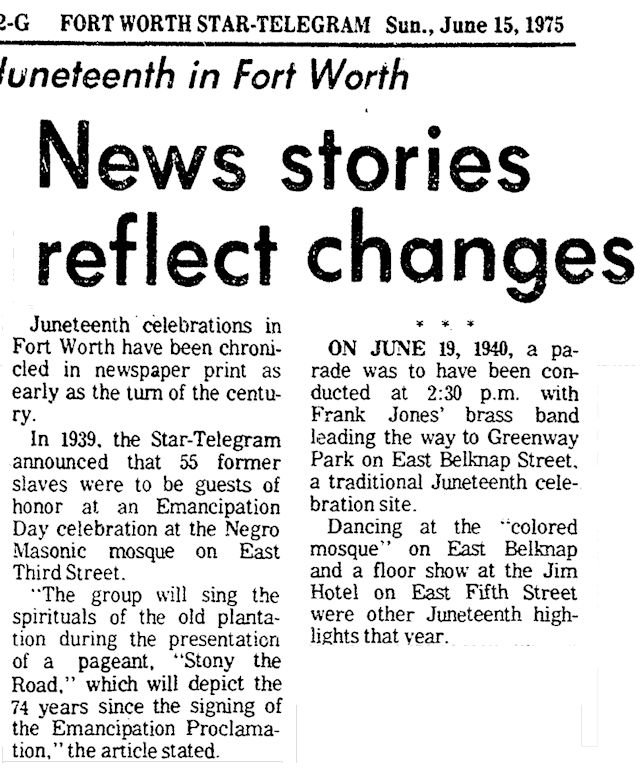 The mosque was one of the main venues for Juneteenth celebrations. In 1939 fifty former slaves were honored at the mosque.
The mosque was one of the main venues for Juneteenth celebrations. In 1939 fifty former slaves were honored at the mosque.
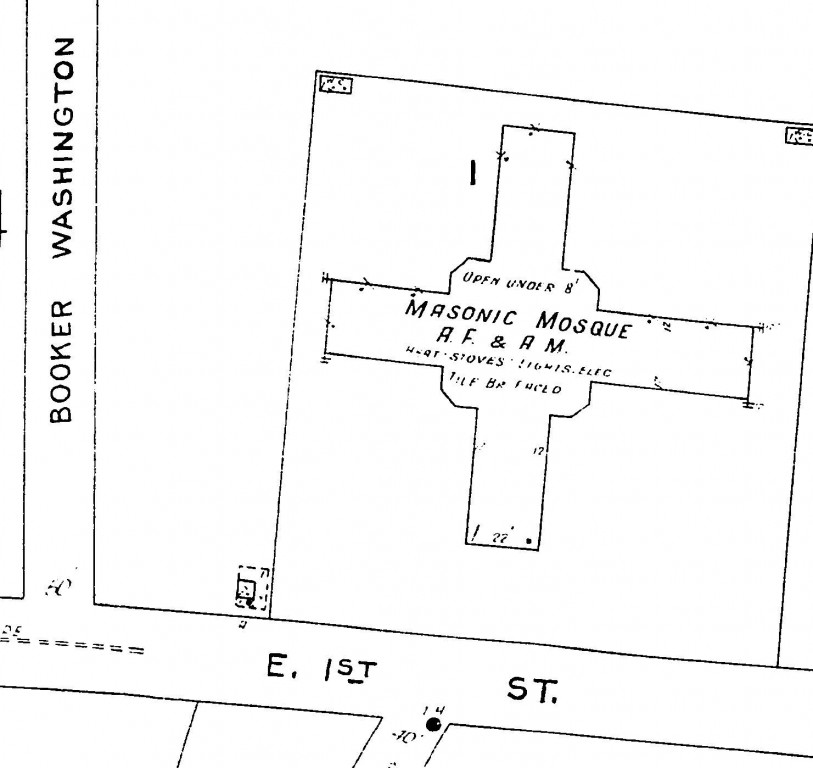 This 1926 Sanborn map shows the East 1st Street mosque.
This 1926 Sanborn map shows the East 1st Street mosque.
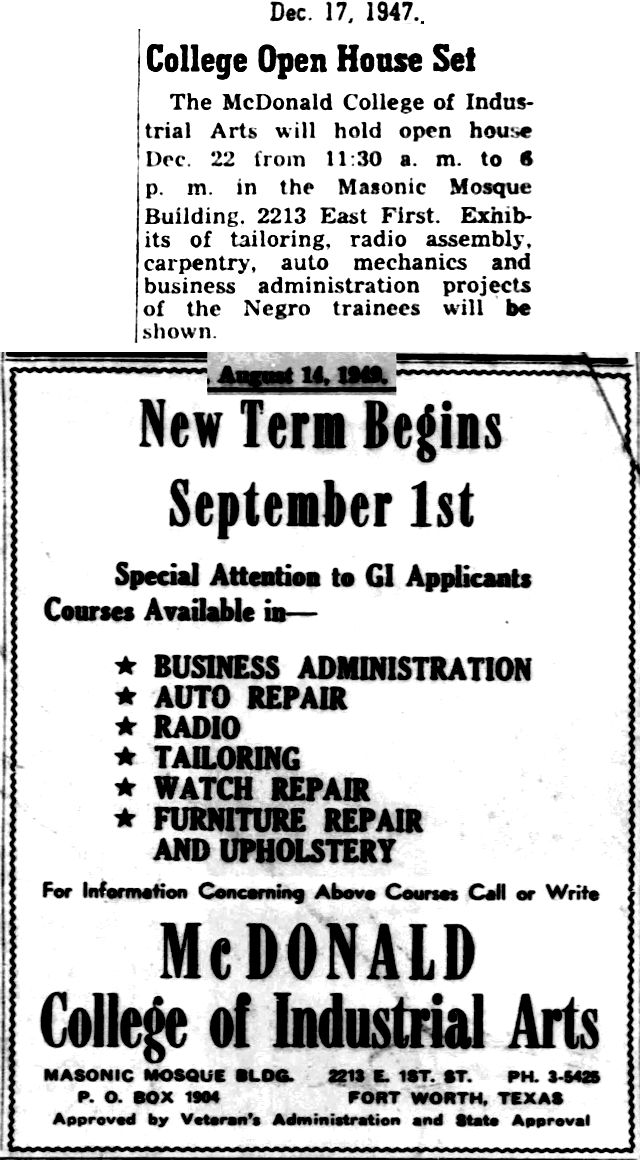 In 1947 the Fort Worth Prince Hall Masons added a college of industrial arts to their lodge hall, on East 1st Street and named it after “Gooseneck Bill” McDonald.
In 1947 the Fort Worth Prince Hall Masons added a college of industrial arts to their lodge hall, on East 1st Street and named it after “Gooseneck Bill” McDonald.
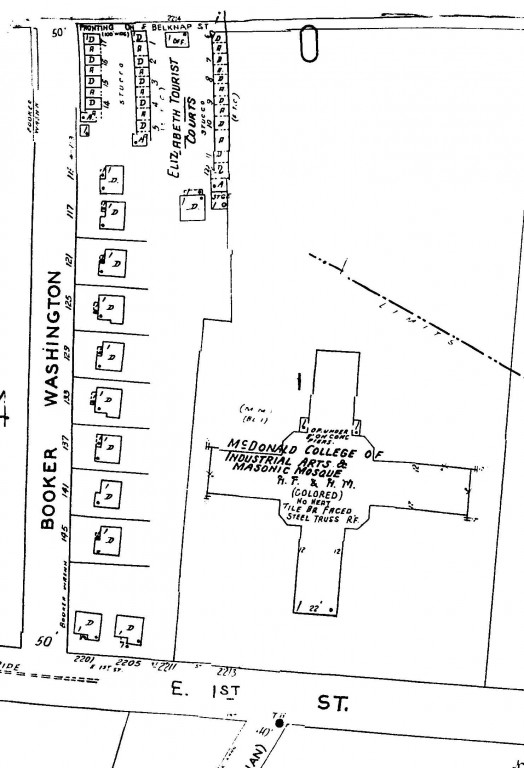 This Sanborn map shows the industrial college. Note the street named for Booker T. Washington.
This Sanborn map shows the industrial college. Note the street named for Booker T. Washington.
Why an industrial college?
Reby Cary, longtime Fort Worth educator, was also the first African-American member of the Fort Worth school board. In an interview in 2007 he recalled programs set up to give job training to veterans after World War II: “They had classes for veterans at the Will Rogers Coliseum . . . to give them the training and different things, you know . . . but the blacks could not attend, so a reverend [Jay Avery Washington?] and friend of mine, [Ebel?] William, they organized . . . the McDonald College of Industrial Arts to train black veterans . . . and we taught auto mechanics and . . . all the trades that could help blacks get jobs.”
Cary was dean of personnel at the McDonald college.
Cary also was a member of Alpha Phi Alpha fraternity, which in 1948 organized a wood craft shop at the college for boys between ages eight and twelve. The shop was part of an attempt to prevent juvenile delinquency.
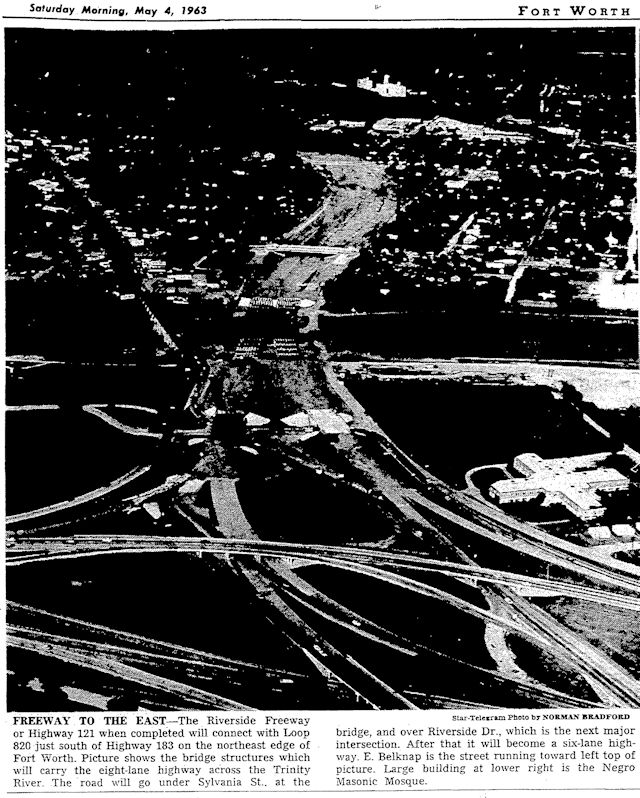 By 1963 the mosque, which had hunkered unmolested for years in the river bottom, was hemmed in by two new freeways: Interstate 35W and the Airport Freeway.
By 1963 the mosque, which had hunkered unmolested for years in the river bottom, was hemmed in by two new freeways: Interstate 35W and the Airport Freeway.
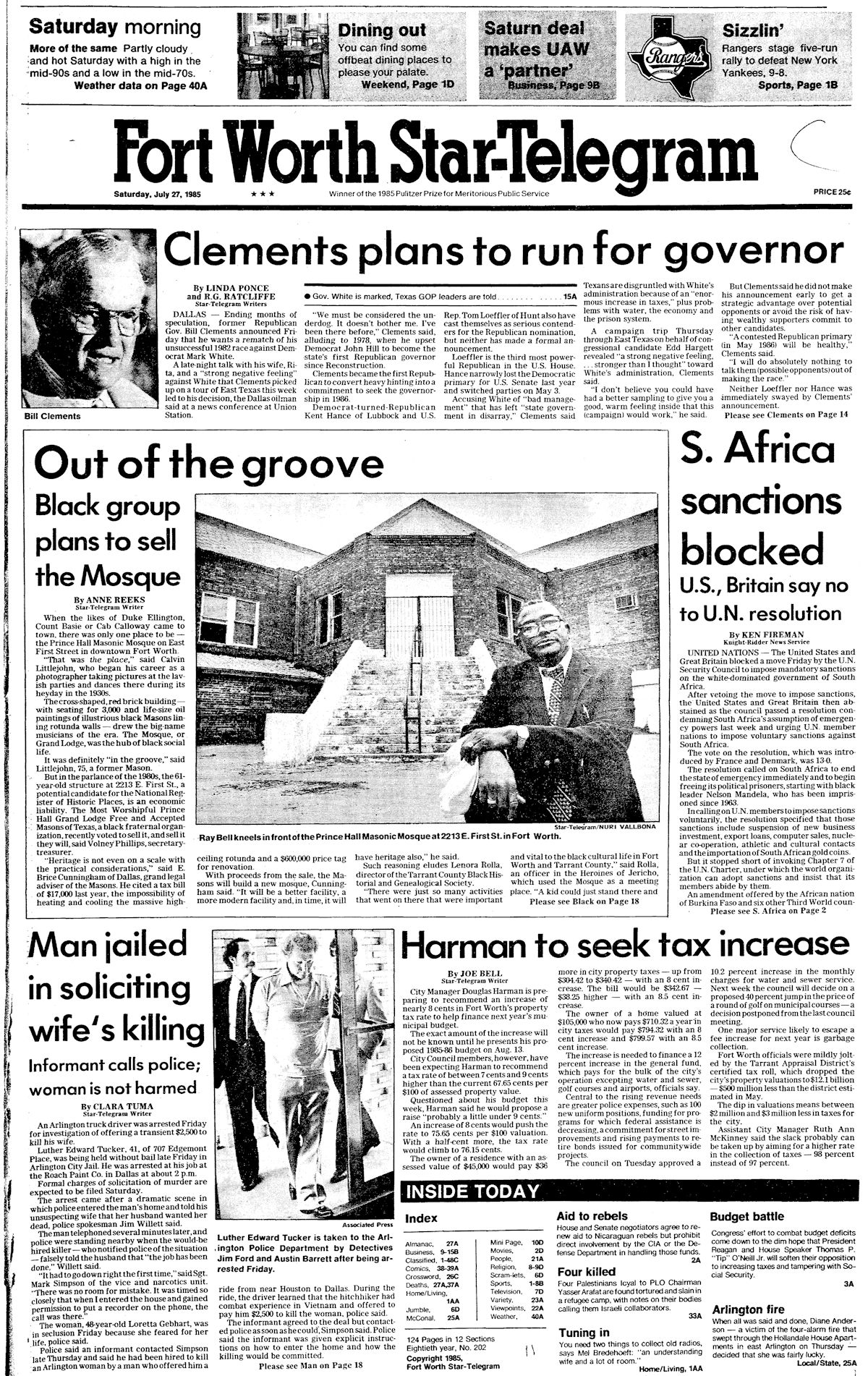 The building survived construction of the two freeways. But by the 1980s the building was in need of repair, with broken and boarded-up windows. Lodge members faced high property taxes, high heating and cooling bills, and an expensive renovation.
The building survived construction of the two freeways. But by the 1980s the building was in need of repair, with broken and boarded-up windows. Lodge members faced high property taxes, high heating and cooling bills, and an expensive renovation.
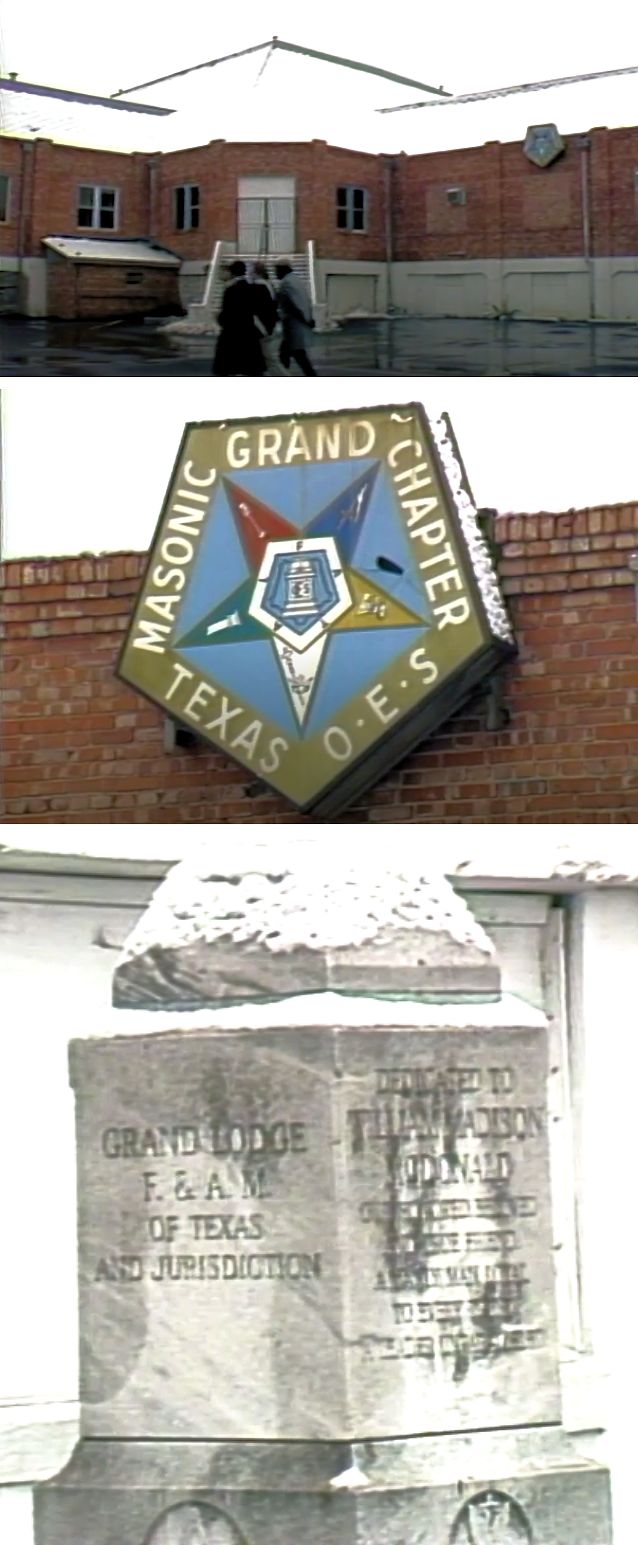 In 1983 Fort Worth civic leaders tried to obtain a historic designation for the building and preserve it but failed. These photos are from a KXAS-TV news report. Note the cornerstone dedicated to McDonald.
In 1983 Fort Worth civic leaders tried to obtain a historic designation for the building and preserve it but failed. These photos are from a KXAS-TV news report. Note the cornerstone dedicated to McDonald.
Lodge members decided to sell the property. The property sold for a reported $2 million, and the building was demolished in 1986.

Now the site is a gas well. Booker T. Washington Street also is gone, but some of its curb survives.
Members of Prince Hall Masonic Mosque built a new hall on Martin Luther King Freeway in Poly.






I was in the place right before it was torn down. It was very nice
Wish I could have seen it. I have no memory of it. Great history.